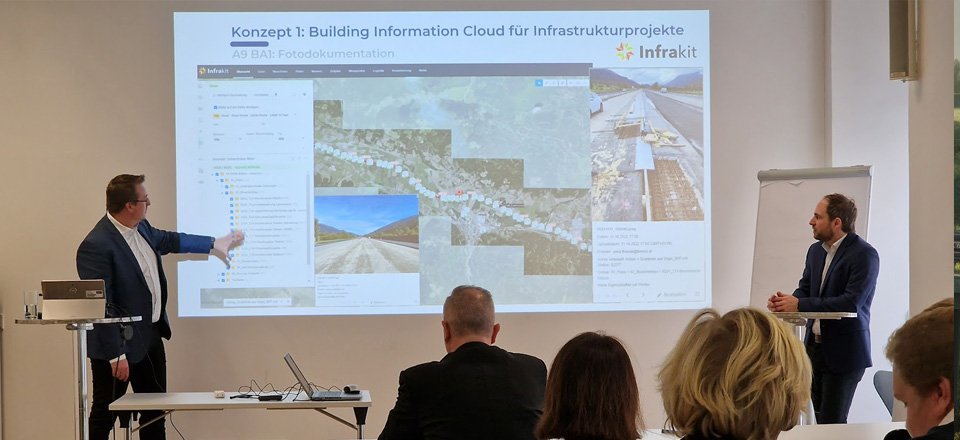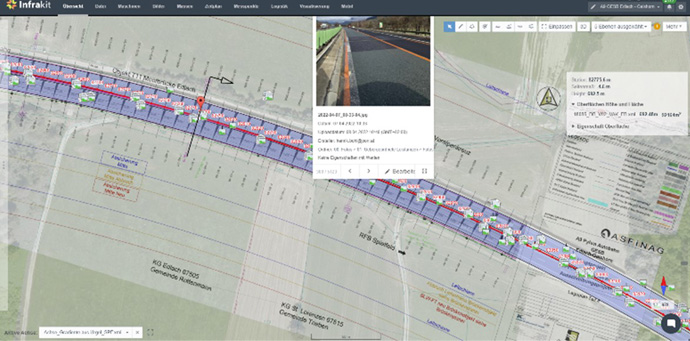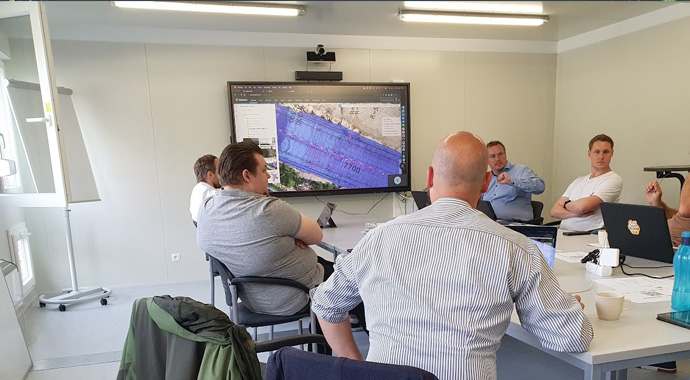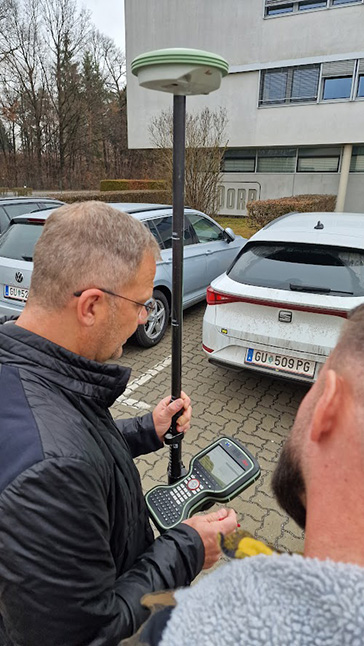
Advancement through digitalization and innovation – Benefits of digitalization in the A9 highway refurbishment for all project participants
The refurbishment of the Pyhrn Motorway A9 is a groundbreaking project in which Austrian motorway authority, ASFiNAG, placed a strong emphasis on digitalization during the tendering phase.
Susanne Wieser, project manager at ASFINAG, explains the background: “One focus of the ASFINAG pilot project is the use of project platform and a sustainable data economy. The goal is to facilitate project implementation during the construction phase and increase productivity through innovative solutions from all project participants, such as automated data storage, resource-efficient documentation, and seamless information exchange. “
The Austrian construction company PORR, Steiermark branch, was awarded the 60 million Euros contract for the refurbishment of approximately 9.5 kilometers of roadway and several bridges. During the qualitative bid presentation, PORR impressed with their digitalization concept, which showcased the Finnish project execution platform Infrakit as the central Project Information Platform, along with other innovative solutions utilized throughout the project implementation. The project is scheduled to continue until 2024.

“We aim to create transparent workflows and collaborate with clients, planners, construction supervision, and external surveying offices through Infrakit.”
“Using Infrakit, we can visually represent and utilize all construction-related data on-site – ranging from surveying and photo documentation to real-time access to model data for 3D-controlled machinery. We aim to create transparent workflows and collaborate with clients, planners, construction supervision, and external surveying offices through Infrakit,” says Christoph Winkler, Team Leader of Execution Digitalisation Support & Operational Management at PORR.

In the construction industry, there are numerous pilot projects that involve the application of digitalization measures and Building Information Modeling (BIM) during the planning phase. However, these projects typically focus on planning and are not implemented in the construction execution phase. In this project, for the first time, the emphasis is placed on construction execution, as it constitutes a significant portion of the overall project costs. Against the backdrop of rising raw material prices and an ongoing shortage of skilled labor, an efficient execution phase is of paramount importance.
“With the practical on-site applications, we can avoid costly rework through quality assurance workflows and real-time data integration.”
“We are not only using Infrakit as a collaboration tool among project participants. With the practical on-site applications, we can avoid costly rework through quality assurance workflows and real-time data integration. The implementation was not always easy because new solutions require a shift in thinking and new ways of working. However, now that the first construction phase has been completed, I can say that the use of Infrakit has been worthwhile,” says Manfred Hübler, project manager and digitalization technician at PORR.
“Infrakit enables the creation of the required documentation by all parties involved. The use of collaborative photo documentation or surveying, for example, provides the advantages of real-time collaboration, accelerated work processes, and a collectively created knowledge base.”
In this project, construction supervision plays a central role as the interface between all project participants to ensure the high-quality requirements are met:
“For us as the local construction supervision, it is clearly about holistic and collaborative cooperation, as well as effective communication among all stakeholders,” says Philipp Premm, Project Manager of Local Construction Supervision at Thomas Lorenz ZT GmbH. “The central platform Infrakit is groundbreaking in supporting the project team in this aspect, as it enables the creation of the required documentation by all parties involved. In this project, we do not see our role as a traditional control entity, but rather as project managers who share all the acquired information using Infrakit, allowing for transparent project monitoring. The use of collaborative photo documentation or surveying, for example, provides the advantages of real-time collaboration, accelerated work processes, and a collectively created knowledge base.”
The surveying department is also significantly involved in the project because the Infrakit platform allows for the integration of orthophotos, point clouds, terrain models, BIM data, and as-built information. Moreover, the Infrakit Field App can be connected to various rover systems directly on the construction site.
« This is the missing link in the digitalization of the construction industry! »

Gerald Fuxjäger, Managing Director of ADP Rinner ZT GmbH, also shares his feedback based on his experiences: “When I first saw Infrakit at a trade fair in 2019, I knew right away: this is the missing link in the digitalization of the construction industry! Why? Because Infrakit is open and transparent, accessible to all stakeholders involved in the construction process, including clients, planners, construction companies, subcontractors, construction supervision, and others. It has a user-friendly management system, open interfaces to our surveying systems and various machine controls, it operates in 3D, and it runs smoothly on mobile devices, tablets, or desktops. Although several steps of the process chain have already been successfully implemented in the A9 project, the potential to become the comprehensive centerpiece of digitalization is far from being fully realized – we look forward to further collaboration!
Sonja Reimann writes in a comment in the Baublatt magazine, January/February 2023 issue, titled « Moving away from the cookie-cutter approach:” Considering the potential for cost savings and the resulting improvements, [in digitalization] is inevitable, even if it is not easy for everyone. It is complex to integrate everything constructed in civil engineering, road construction, and earthworks into a data structure and a digital terrain model. No one has to tackle this alone; they can seek advice or support from external specialists to develop a comprehensive digital solution that meets operational requirements in the long run.”
The benefits of digitalization have already become evident in this project, and they will undoubtedly play a significant role in the execution of construction projects long into the future.
Book a Demo
Discover how Infrakit connects your entire infra project operations and drives value to every part of your business.
